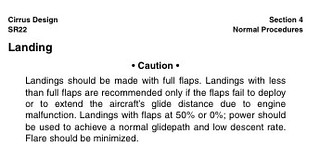PaulS
Touchdown! Greaser!
That's generally good advice, but the student should also be reading the POH and the textbooks to be sure he's getting the right stuff. There are too many instructors who are teaching wrong techniques that they picked up in their training, and some have even developed their own bad habits that they pass on to their students. I saw plenty of evidence of that when I was an instructor.
If there is no "anchor," some solid source of truth in training, students will pick up all sorts of debilitating habits. And it's getting worse all the time as reading skills have deteriorated in the age of TV and computers. Kids watch movies or pay video games instead of reading. And some even watch YouTube videos made by private pilots, teaching flying. Ugh. The dissemination of misinformation.
I agree, but those are mostly questions for on the ground, not before the flare. I've had a few of those instructors, not bad instructors, just didn't read or forgot the POH. One that comes to mind is a guy who was doing a rental checkout in a Cirrus, there was one runway, albeit long, with a 15 to 28 knot direct crosswind. We decided to go, touch and goes, he says, "tough crosswind, use half flaps", I said, "Cirrus says full flaps", he says "no sir", I say "Ok, you're here to bail me out if I screw up". I greased the landings, about 5 of them. I offered one to him, he said "no thanks", lol. To his credit, the next day he came up to me and told me I was right, he had talked to a CSIP, full flaps with a Cirrus.


